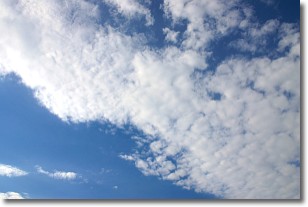Weather Alert in Idaho
Extreme Heat Watch issued August 20 at 2:09PM PDT until August 26 at 9:00PM PDT by NWS Spokane WA
AREAS AFFECTED: Lewiston Area; Lower Garfield and Asotin Counties; Moses Lake Area; Upper Columbia Basin; Wenatchee Area; Okanogan Valley; Waterville Plateau; Central Chelan County; Western Okanogan County
DESCRIPTION: * WHAT...Hot temperatures. High temperatures 95 to 102 degrees. Limited overnight relief with low temperatures 65 to 74. * WHERE...Loup Loup Pass, Pomeroy, Brewster, Peck, Pangborn Airport, Plain, Harrington, Gifford, Moses Lake, Clarkston, Odessa, Ritzville, Wilbur, Lapwai, Ephrata, Wenatchee, Oroville, Mazama, Cashmere, Mansfield, Coulee City, Alpowa Summit, Methow, Bridgeport, Chelan, Okanogan, Lewiston Grade, Conconully, Tonasket, Grand Coulee, Omak, Othello, Disautel Pass, Quincy, Entiat, Lewiston, Winthrop, Nespelem, Number 2 Canyon, Creston, Badger Mountain Road, Leavenworth, Culdesac, Twisp, Number 1 Canyon, and Waterville. * WHEN...From Saturday afternoon through Tuesday evening. * IMPACTS...Hot temperatures will increase the risk of heat-related illnesses. Heat of this magnitude affects anyone without cooling and hydration as well as health systems and industries.
INSTRUCTION: Drink plenty of fluids, stay in an air-conditioned room, stay out of the sun, and check up on relatives and neighbors. Do not leave young children and pets in unattended vehicles. Car interiors will reach lethal temperatures in a matter of minutes. Take extra precautions when outside. Wear lightweight and loose fitting clothing. Try to limit strenuous activities to early morning or evening. Take action when you see symptoms of heat exhaustion and heat stroke. To reduce risk during outdoor work, the Occupational Safety and Health Administration recommends scheduling frequent rest breaks in shaded or air conditioned environments. Anyone overcome by heat should be moved to a cool and shaded location. Heat stroke is an emergency! Call 9 1 1.
Want more detail? Get the Complete 7 Day and Night Detailed Forecast!
Current U.S. National Radar--Current
The Current National Weather Radar is shown below with a UTC Time (subtract 5 hours from UTC to get Eastern Time).

National Weather Forecast--Current
The Current National Weather Forecast and National Weather Map are shown below.

National Weather Forecast for Tomorrow
Tomorrow National Weather Forecast and Tomorrow National Weather Map are show below.

North America Water Vapor (Moisture)
This map shows recent moisture content over North America. Bright and colored areas show high moisture (ie, clouds); brown indicates very little moisture present; black indicates no moisture.

Weather Topic: What are Stratus Clouds?
Home - Education - Cloud Types - Stratus Clouds
 Next Topic: Wall Clouds
Next Topic: Wall Clouds
Stratus clouds are similar to altostratus clouds, but form at a
lower altitude and are identified by their fog-like appearance, lacking the
distinguishing features of most clouds.
Stratus clouds are wider than most clouds, and their base has a smooth, uniform
look which is lighter in color than a nimbostratus cloud.
The presence of a stratus cloud indicates the possibility of minor precipitation,
such as drizzle, but heavier precipitation does not typically arrive in the form
of a stratus cloud.
Next Topic: Wall Clouds
Weather Topic: What are Altocumulus Clouds?
Home - Education - Cloud Types - Altocumulus Clouds
 Next Topic: Altostratus Clouds
Next Topic: Altostratus Clouds
Similar to cirrocumulus clouds, altocumulus clouds are
characterized by cloud patches. They are distinguished by larger cloudlets
than cirrocumulus clouds but are still smaller than stratocumulus clouds.
Altocumulus clouds most commonly form in middle altitudes (between 2 and 5 km)
and may resemble, at times, the shape of a flying saucer.
These uncommon formations, called altocumulus lenticularis, are created by uplift
in the atmosphere and are most often seen in close proximity to mountains.
Next Topic: Altostratus Clouds
Current conditions powered by WeatherAPI.com




